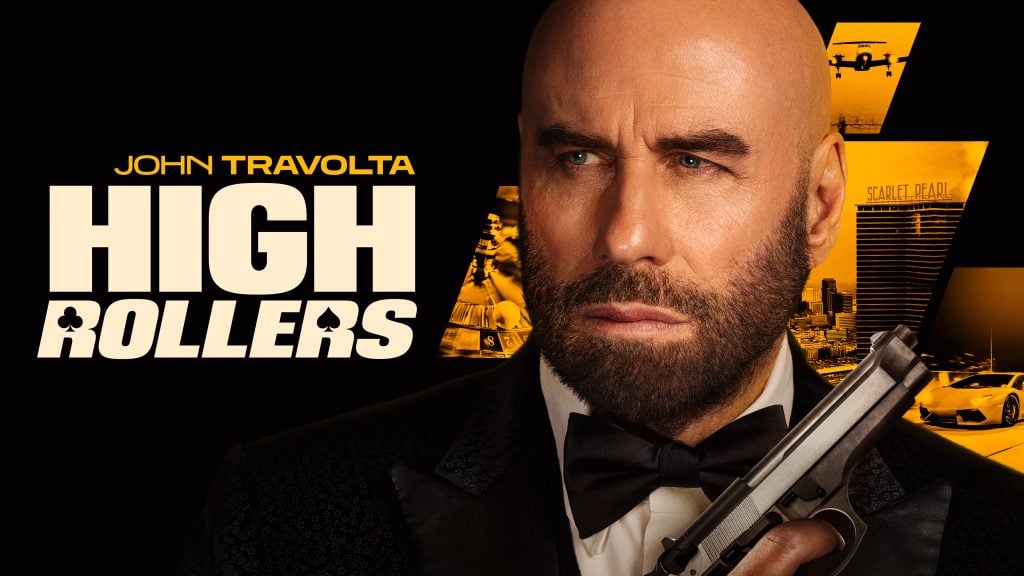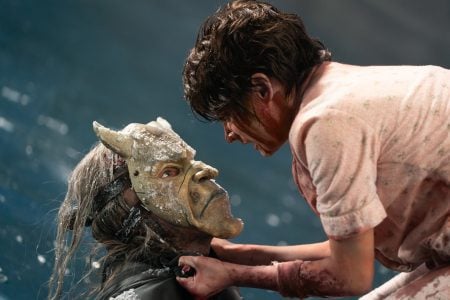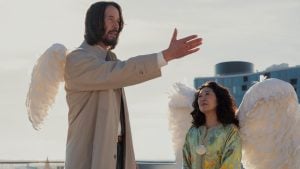When John Travolta is announced on a movie poster as the leader of a daring gang, the audience expects a vibrant adventure in the style of the best crime hits. The classics of the genre require a witty script, charismatic characters, and unexpected twists. However, instead of a thrilling blockbuster, the viewer is faced with a series of disappointments and bewilderment.
Expectations and Reality in Comparison with Ocean’s Eleven
Having noticed Travolta’s name and the genre, many critics immediately draw parallels with the cult film Ocean’s Eleven. That film set the standard for crime stories about luxurious heists. It combined dynamics, style, wit, and memorable characters. Fans of the genre expect the same intensity, unconventional moves, and impressive camerawork.
But High Rollers does not fulfill any of these hopes: the film resembles an unsuccessful parody without a spark of originality. The question arises: if even the basics of the genre’s success are ignored, what could attract the viewer—the name of the main actor or a familiar plot formula?
Plot and Team: A Brief Look at the Setup
The main character, Mason Goddard, portrayed by Travolta, is presented as the leader of a motley crew of conmen. Among his associates are the tech-savvy Link, his naïve brother Sean, and several underdeveloped henchmen.
The setup is banal in its simplicity: during the wedding of one of the gang members, the villain Salazar appears and kidnaps Mason’s wife. In exchange for her freedom, the team is obliged to rob a mysterious safe in a supposedly luxurious casino, as intended by the screenwriters.
However, the characters’ motivation seems so artificial that it’s hard to empathize even with the protagonist. The characters remain clichéd figures without individuality. A logical question arises: can such heroes even arouse interest or sympathy in the viewer?
Atmosphere, Visual Style, and Budget Constraints
The visual world of the film immerses the viewer in the atmosphere of a cheap casino, where garish carpets and dubious furniture betray an attempt to imitate luxury on a minimal budget. The interiors look fake, the details are deliberately monotonous, and the sets resemble economy-class sound stages.
This creates additional distance between the viewer and the screen, which especially undermines the image of land-based casinos in the era of the iGaming industry’s development. After all, traditional gambling today is influenced by numerous online casinos. Technology allows access to thousands of gambling games right from home. Almost all popular casinos have convenient websites with wide functionality. Moreover, the Melbet android app and similar products from other brands allow you to play with your phone in hand right on the couch. In such a situation, it seems strange to many that anyone could enjoy visiting land-based casinos at all—especially if they are depicted so mediocrely.
It seems the creators hoped to pass off the lack of resources as a stylistic feature, which often happens in failed projects that aspire to irony. However, here the “budget” aesthetic only emphasizes the lack of credibility. Especially if you compare what’s shown in the film to the best online casinos in cities popular with gambling enthusiasts. How can a viewer believe in the threat and glamour of the criminal world when everything around looks like the props from a school play?
Problems with the Script and Direction
Delving into the plot, it becomes obvious: the film’s script is riddled with ridiculous inconsistencies and blatant plot holes. Directorial decisions don’t save the situation: the pacing is botched, many episodes look absurd, and the dialogues lack expressiveness. Among the most evident flaws, one can highlight:
-
Lack of logic in character motivation
-
Unconvincing conflict and formulaic twists
-
Poor editing, disappearing objects, and ridiculous costume changes
-
Artificial dialogues that sound like a parody of the genre
Against the backdrop of recognized genre examples such as Heat or Going in Style, High Rollers seems like an accidental mistake—though more likely, it’s a systemic failure. Can such shortcomings be considered a result of bad luck, or do they reflect an overall fatigue with the genre?
Acting
Travolta appears in a new image, forgoing his usual wigs and playing a brutal, bald leader. Despite the actor’s efforts, his character clearly lacks depth and charisma. Gina Gershon, playing Mason’s wife, maintains her dignity even in ridiculous situations. The supporting roles, including the characters played by Pardo, Haas, and Quavo, either look too cardboard or are lost in the chaos of the production. There are isolated moments when the actors try to add liveliness, but the script does not allow any of them to shine.
There is a sense that even a world-class star is powerless to enliven the material if they don’t have the tools for it. Can one count on success if even a famous actor can’t carry the character?
Humor and Awkward Moments
Paradoxically, in some episodes, High Rollers elicits involuntary laughter precisely because of its clumsiness. The characters do absurd things, lines sound unexpectedly comical, and the sets and decorations look almost parodic. Unlike intentional gags in real comedies, here the “humor” arises from mistakes and shoddy work.
Especially memorable are scenes with ridiculous chases, strange dances against the backdrop of cheap interiors, and artificially dramatic pauses. Could the film repeat the fate of cult “trash comedies” that attract interest thanks to their absurdity? Some viewers rewatch such films for this very reason.
John Travolta’s Career Context
Travolta’s cinematic journey is full of both major successes and controversial experiments. After his triumphs in Pulp Fiction and Face/Off, the actor has repeatedly appeared in frankly weak projects, such as Battlefield Earth. According to The Guardian’s reviewers, High Rollers not only fails to measure up to his best works, but also turns failure into an art form.
Historically, such films appear regularly—as a result of poor production decisions or attempts to quickly cash in on a recognizable name. Among crime comedies, there are other examples that failed to find a balance between parody and dynamism. Nevertheless, such films sometimes gain a small group of fans who turn a flop into a meme.
Arguments, Analysis, and Reasons for Failure
The connection between a limited budget, a weak script, and lackluster direction is obvious: all these factors together produce a disappointing result. The viewer finds neither tension nor excitement, nor the desire to follow the characters. The key reason is the lack of fresh ideas and a conscious approach to the genre’s formula, as confirmed by most film critics. How can this be avoided in the future? Perhaps it is worth working more carefully on scripts and not relying solely on star names.
Final Thoughts
So, is it worth watching High Rollers to laugh at someone else’s mistakes, or is it better to choose the classics of crime comedy? Share your impressions if you’ve already seen this film, and tell us—does it deserve a second chance, or will it forever remain an example of how not to do it?

Robert Griffith is a content and essay writer. He is collaborating with local magazines and newspapers. Robert is interested in topics such as marketing and history.






![‘Frankenstein’ Review – Guillermo del Toro’s Definitive Look At The Nature And Nurture Of Monstrosity [TIFF 2025] ‘Frankenstein’ Review – Guillermo del Toro’s Definitive Look At The Nature And Nurture Of Monstrosity [TIFF 2025]](https://cdn.geekvibesnation.com/wp-media-folder-geek-vibes-nation/wp-content/uploads/2025/10/Frankenstein-175_PF_20240430_20377_R-300x200.jpg)